





-
Elevated levels of food insecurity reflect an ongoing regional hunger problem that’s both significant in its persistence and deepening in its severity.
-
The region’s positive macroeconomic indicators aren’t being felt by the most vulnerable residents – and recent reductions in federal jobs and spending have had a substantial impact.
-
Food insecure households are increasingly faced with difficult financial choices, such as depleting savings, relying on debt, and making tradeoffs between food and other essential expenses.
-
The impacts of current financial strains have potential long-term economic consequences – which could also be exacerbated by the cuts to government assistance programs and further federal downsizing.
-
There are opportunities in all sectors to address the mounting challenges facing people in our region, including preserving access to SNAP and school meals, expanding job-training opportunities, and scaling Food Is Medicine initiatives.
Foreword
The past year has seen the region and its economy thrust into deeply uncertain waters. While many macro-level indicators still point to steady post-pandemic gains in areas like GDP and unemployment, the dramatic re-shaping of the government and its funding streams over the last nine months are having profound and widespread impacts that could counter that progress. What’s more, a closer look at our area’s economic data reveals that even before these seismic shifts in the public sector, top line narratives of growth and recovery were already failing to reflect the very different experience that many people in our area are having.
To make sense of what all this has meant for regional food insecurity in the last year, CAFB conducted its annual general population survey with trusted independent social research organization NORC at the University of Chicago, gathering data from nearly 4,000 DMV residents. General population surveys are the most reliable and accurate tools available for understanding the prevalence of key issues in the context of broader society.
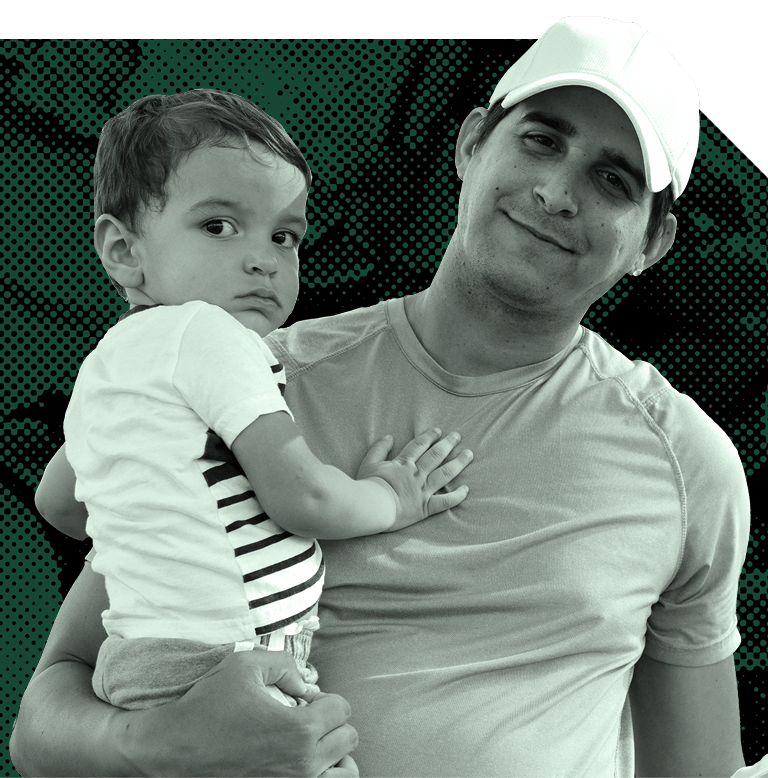
The results from the survey, finalized in early June, paint a picture of a regional hunger problem that is significant and deepening. Food insecurity, which rose starkly last year, has remained at persistently high levels over the last twelve months. Moreover, the issue is worsening in its severity: for the third year in a row, the number of people who are experiencing very low food security has risen. Among these are many members of the federal and contractor workforce whose employment has been impacted by recent cuts.
The survey’s findings also showcase the continuously widening gap in our regional economy. For a large and expanding share of the population – particularly those who are working but earning a low or unstable income – the forces of high inflation, slow wage growth, and limited access to opportunity are exerting incredible pressure on household finances, making it more difficult to consistently secure basic needs like food.
To understand the implications of the economic stressors faced by large numbers of area residents, the report once again takes a close look at the difficult tradeoffs and financial coping strategies deployed by those facing hardship. Beyond exploring the impossible choices individuals must often make between food and other critical necessities like housing and medicine, Hunger Report 2025 also delves into data about the patterns of deferred savings and deepening debt that are coming to characterize the personal economies of a growing number of people.
Perhaps more than any report since those published at the height of the pandemic, Hunger Report 2025 reflects a rapidly evolving landscape – one that has shifted multiple times even in the few short months since the CAFB-NORC survey was fielded. For that reason, this year’s report also looks ahead to explore some of the factors shaping the direction of food insecurity and economic stability in our region over the coming months and years. These include the financial coping behaviors currently derailing the long-term financial well-being of an increasingly large number of our neighbors, and the impacts of recent legislation on programs like SNAP and Medicaid, as well as ongoing federal spending cuts.
The trends highlighted in this year’s report point to challenges that are not diminishing and, in fact, may be poised to worsen in the coming months. Continuously deepening food insecurity and hardship would have enormous consequences for individuals, communities, and for our area as a whole – both in the immediate term and in the future. Accordingly, the report also includes recommendations for ways that every sector can play a role in changing some of these harmful trajectories. From upskilling our regional workforce to meet the needs of a changing economy, to pressing for policies that support health, learning, and productivity for people of all ages through access to good nutrition, there are many ways to take action. With the prospect of even greater hunger on the horizon, working together to move this needle has never been more important.
Key Terms
DMV (or Greater Washington Area)
For the purposes of the 2025 Hunger Report, the DMV, short for DC-Maryland-Virginia—also referred to in the report as Greater Washington—refers to the Capital Area Food Bank’s service area, which includes the following jurisdictions: the District of Columbia; Montgomery and Prince George’s Counties in MD; Fairfax, Arlington, and Prince William Counties in VA; and Alexandria City, VA. (Within Fairfax County are included Fairfax City and Falls Church City. Within Prince William County are included Manassas City and Manassas Park City.) Mentions of the Washington DC Metropolitan Statistical Area (MSA) are overlapped, but not equivalent, as they refer to the region delineated by the Office of Management and Budget (OMB), and is larger than CAFB’s service area.
Food Insecurity
The United States Department of Agriculture (USDA) defines food insecurity as “a lack of consistent access to enough food for an active, healthy life.” Using the USDA’s standard eighteen-question screener the report identified individuals who are referred to as food insecure as having experienced one or more food-related hardships at any point during the past 12 months. The screener is used to identify four levels of food security: food secure, marginally food secure, low food secure, and very low food secure. In this report, the first two categories combined are referred to as food secure, and the third and fourth categories combined are referred to as food insecure.
Very Low Food Security
The USDA’s screener measures the lowest, most severe category of food insecurity as “very low food security.” People with very low food security reported multiple indications of disrupted eating patterns and reduced food intake in the screener. Very low food security is also referred to in the report as “very food insecure.”
Hunger
Hunger is a physical symptom of a lack of adequate food. It is not a quantifiable term, but rather a description of the result that reducing one’s food intake can have. Hunger and food insecurity are not synonymous, though they are closely related.
Low-Income Households
Throughout, the report mentions “high-income,” “middle-income,” and “low-income” households. These three categories are defined as three equal thirds of the income distribution in the Greater Washington region. In 2025, the income breaks for the three groups are $0–$89k (low-income households), $90k–$179k (middle-income households), and $180k and above (high-income households). For reference, the living wage for a family of four in Greater Washington is $143,300, according to the MIT Living Wage Calculator.






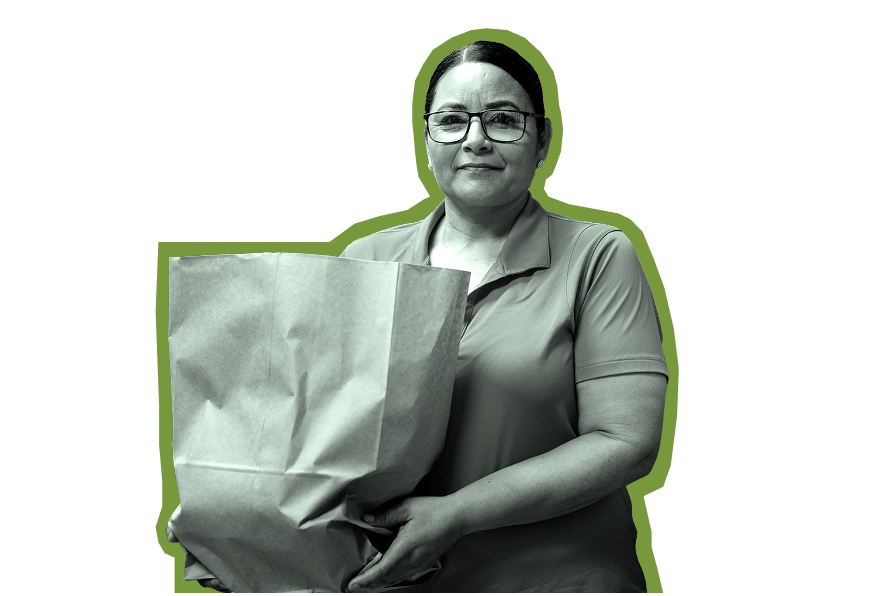

Food Insecurity Trends in Greater Washington
Hunger across the region
Food Insecurity Remains Elevated Across Greater Washington for a Second Year
For the second year in a row, the Capital Area Food Bank (CAFB) and National Opinion Research Center (NORC) at the University of Chicago found that food insecurity remains at extremely high levels across the Greater Washington region, impacting more than one in three people. Following a sharp rise in 2024 across all geographies, races, and income groups, these elevated rates have persisted into 2025. Additionally, for the third year in a row, very low food insecurity has risen substantially across the region and is now 6 percentage points higher than in 2022.
As in past years, the CAFB-NORC survey captured information about individuals’ food security status based on their replies to an 18-item questionnaire designed by the U.S. Department of Agriculture (USDA) to measure food insecurity.
Regional trends
In 2025, the CAFB-NORC study found that 36% of households experienced food insecurity within the past year—nearly unchanged from 37% in 2024, but notably higher than the 32% reported in 2023.
In other parts of the country, surveys with similar methodology show parallel trends of rising food insecurity in the post pandemic years. For example, in Massachusetts, a study by the Greater Boston Food Bank found that food insecurity rose from 34% in 2023 to 37% in 2024.
Very low food insecurity is now 6 percentage points higher than in 2022.
Prevalence of food insecurity in the DMV
County-level trends
At the county level, food insecurity rates largely mirror the regionwide trend, with most counties showing changes of one percentage point or less compared to 2024. The one exception was Alexandria City, which showed a four-point decline. However, that difference remains within the margin of error for county-level estimates.
Prevalence of food insecurity by county by year
Trends in very low food security
More People Are Going Without the Food They Need
While overall rates of food insecurity persisted at a high level, this year’s survey points to a continued increase in its severity. The share of food insecure households with very low food security has grown sharply over the past three years—from 16% in 2022 to 22% in 2025. This equates to more than 820 thousand adults now in the lowest tier of food security and an increase of nearly 75,000 adults per year since 2022.

This increase appears to be driven in part by mounting financial pressure on low-income households fueled by elevated inflation on food and other necessities, as well as acute hardship among families affected by the end of pandemic-era federal spending. As a result, more households are not only facing limited access to nutritious and desirable food (low food security) but are also experiencing disruptions in the amount of food they consume and the regularity of their eating patterns (very low food security).
Level of food insecurity by year in the DMV
Insights into who is experiencing food insecurity
Low-Income and Marginalized Communities Continue to Experience Hunger Disproportionately
To understand who is most affected by food insecurity, the CAFB-NORC survey collects detailed socioeconomic data on both food secure and food insecure households. In 2025, the demographic profile of the food insecure population remained largely consistent with the previous year. As in 2024, those most likely to experience food insecurity include households with lower incomes and educational attainment, households with children, and Black and Hispanic households.
Characteristics of food insecure and food secure populations








Economic Drivers of Food Insecurity
A tale of two economies
Recovery Is Not Reaching the Region’s Most Vulnerable Households
Despite steady post-pandemic gains in key national and regional economic indicators—rising real GDP and relatively low unemployment in this region and nationally—food insecurity has not followed suit, as demonstrated by the charts above. Historically, as GDP and employment rates recover following a recession, food security typically begins to recover soon after, even if it takes several years to get back to prerecession levels. This was the case in the decade following the Great Recession. However, elevated levels of food insecurity in 2024 and 2025 reveal a growing disconnect between traditional measures of economic health and the lived experiences of many in the region.
Real GDP per capita and unemployment
For a large and expanding share of the population—particularly those who are working but earning a low or unstable income—the pressures of high inflation, slow wage growth, and limited access to opportunity have persisted, even as topline data have pointed to economic progress. This contrast underscores a widening divide: one economy marked by growth and recovery, and another in which basic needs are increasingly out of reach.
These trends are being felt acutely by residents across the region. In 2025, a growing number of respondents report that their financial situations have worsened compared to the previous two years. According to the CAFB-NORC survey, 40% of adults say their household finances declined, while only 16% report improvement. Many attribute this decline to rising expenses and the overall cost of living, as well as job loss—especially for those employed by the federal government—reduced hours, or salary cuts.
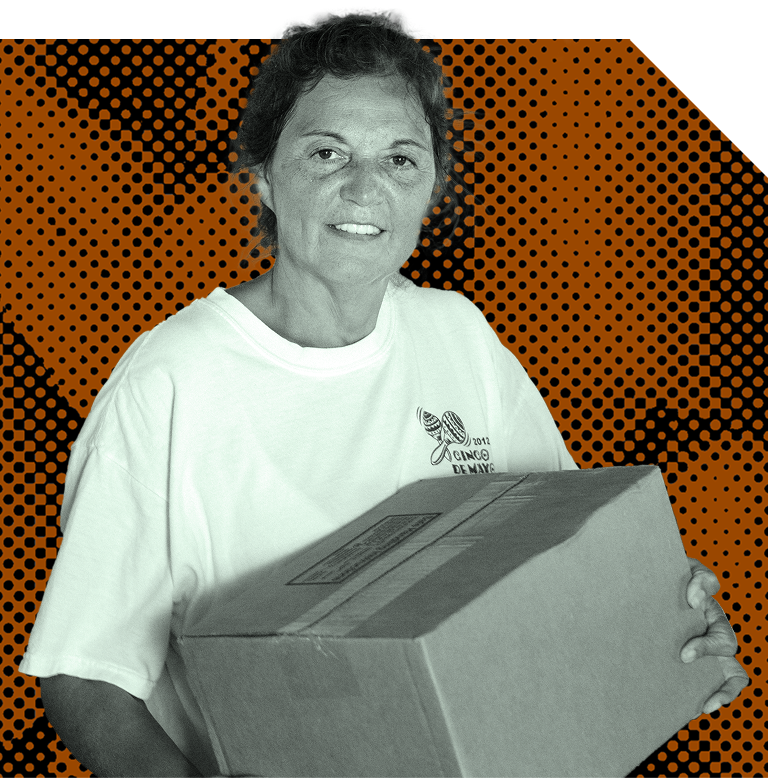
Change in DMV households' financial situation in past 12 months
There are certain fixed expenses that you just can't cut, so that means you have to cut back your spending on food.
Food insecurity for low-income households
This divide in experiences of the economy is especially stark when viewed through the lens of income. In 2025, the CAFB-NORC survey found that food insecurity now affects 60% of households in the bottom third of the income distribution—up from 53% just two years earlier. This steady increase underscores how economic gains have bypassed many of the region’s lowest income households, leaving a growing share unable to reliably afford food.
Food insecurity by household income level
Low-income respondents were also far more likely to report worsening finances compared to those in middle- and high-income groups, highlighting the uneven impact of economic pressures across the region. As in 2024, nearly half of low-income respondents said their household finances are deteriorating, compared to 26% of middle-income and 28% of high-income respondents.
Change in DMV households' financial situation in past 12 months, by household income level
Declining purchasing power
The growing disconnect between the relatively positive tenor of traditional economic indicators and the financial uncertainty in daily life for many in the DMV becomes clearer when examining purchasing power—what households can afford with their wages, given changing prices over time.
Rising prices for essentials like housing have left Carmen worried that retirement may not be possible.
In May 2025, when the CAFB-NORC survey was conducted, inflation in the region hovered around 1.9%—a notable decline from its 2022 peak of 7.5%. Yet the cumulative impact is what most consumers experience: prices for most goods and services are now 21% higher than they were during the pandemic five years ago. Food prices specifically rose by a similar amount over that same five-year period.
Inflation rate in the DMV
Household income from wages has not kept pace with this increase in costs. Wages did not rise in step with the 2022 inflation spike, and since then, the gap between income and cost of living has only widened.
Prices are now 21% higher than they were during the pandemic five years ago.
Cumulative inflation and wage growth in the DMV
This pattern is especially pronounced in the Greater Washington region, where real wages have trailed national trends. Over the past five years, real wages in the DMV have fallen by 12.1%, while they only fell by 2.8% nationwide.
Cumulative change in real wages in the DMV
Over a five-year period, real wages in Greater Washington are down 12.1%, compared to a 2.7% decline nationally.
The erosion of purchasing power has been felt most acutely by those at the bottom of the income distribution. Nationally, wage growth for the bottom 25% of earners is now lagging behind all other income groups. This marks a reversal from the trend of faster wage growth for low-wage workers that existed for much of the past decade.
Wage growth by income quartile
Impacts of federal spending cuts
Food Insecurity Has Surged In Households Affected by Federal Job Reductions
In addition to a general decline in purchasing power across the DMV, the significant 2025 reductions in force (RIFs) within the federal government reshaped the livelihoods of thousands of public servants and contract workers across the Greater Washington area. As these federal workforce reductions rippled through the local economy, many affected households experienced financial instability, with food insecurity quickly emerging as an urgent consequence of job losses.
Adam, a retired veteran, lost his job in the federal government as a result of the recent spending cuts. For the first time, he is navigating the social safety net while facing uncertainty about what’s next.
41% of households impacted by federal cuts to jobs and spending were food insecure when the survey was fielded in May 2025.
As of May 2025, when the CAFB-NORC survey was fielded, 41% of households with direct or indirect federal government employment that had experienced a job loss were food insecure. This is more than double the rate of food insecurity for similar households who did not experience a loss of employment (17%) and higher than the general population rate of 36%. Notably, within this group of food insecure households impacted by federal changes, more than two-thirds are in the most severe level of food insecurity—“very low food security.”
Prevalence of food insecurity by federal employment status
Average incomes of those impacted by federal cuts
At lower income levels, studies indicate that these households likely only had 1–2 months’ worth of savings to support their expenses, suggesting a very short runway between loss of employment and financial hardship.
A loss of employment can force immediate and difficult decisions between housing, utilities, healthcare and groceries.
Average savings (in dollars and months of expenses) by income level
As noted in previous Hunger Reports, a household income of $100,000 in the Greater Washington area can be lower than the living wage, depending on household structure. For these households, a loss of employment can force immediate and difficult decisions between housing, utilities, health care expenses, and groceries, even with other sources of short-term support, such as unemployment insurance.
Minimum household income required to cover a basic budget in the DMV
We try to find the strategies to make sure we have some portion to cover the uncertainty. We don't know when we'll be able to secure another job.
Among federal employees and contractors who were laid off in the last 12 months, more than half reported low or no confidence in finding another job that pays similar wages to their last job. Looking to broader unemployment trends, the average duration of unemployment as of June 2025 (seasonally adjusted, all unemployed people nationally) was 23 weeks, and the number of individuals who have been jobless for 27 weeks or more (which is considered long-term unemployment) has been growing since 2023. These data suggest that the trends noted above related to food insecurity are not likely to be reversed for this population in the near term.
Confidence in reemployment at a similar wage among workers impacted by federal cuts








Responses to Hardship
A large and growing percentage of people in the DMV region is experiencing economic pressures that are having significant impacts on their household budgets. As a result, many families and individuals are engaging in numerous financial coping behaviors to make ends meet. They are also facing difficult choices that often require making trade-offs of varying types and severity between basic necessities.
Financial coping behaviors
Households Are Increasingly Depleting Savings and Relying on Debt to Stay Afloat
Data show that the use of various financial coping strategies is currently high—and rising—among food insecure DMV residents. Tapping into savings to pay for essential expenses topped the list, with the vast majority of food insecure respondents (83%) reporting that they had used savings to pay for things like housing, utility bills, or debt payments. This is up significantly from just two years ago in 2023, when 64% of those facing food insecurity reported this behavior. Other frequently cited financial behaviors in 2025 include making only minimum payments on credit cards or loans (70%); curtailing savings for retirement or other future expenses (62%); and making an early withdrawal from a retirement account (32%).
Share of food insecure residents using financial coping mechanisms
Mounting financial strains have drained Eneshal’s savings and left her relying on credit cards to pay for her family’s basic necessities.
“The cycle is just so difficult because what it means we're just getting backed up with bills.”
Households that have been impacted by recent reductions in government jobs and funding, when examined as a discrete population, are also demonstrating a higher incidence of these financial coping behaviors. Among this group, three quarters (74%) of households are drawing on savings to make ends meet. More than half have stopped contributing to long-term savings (55%) or are making only minimum payments on credit cards or loans (53%). Almost a quarter (24%) are drawing on retirement funds earlier than planned.
Share of households impacted by federal cuts using financial coping mechanisms
Credit Cards & Buy-Now-Pay-Later
As noted above, paying minimum amounts on credit cards or other debt is the second most common financial coping strategy for food insecure households in the region. With interest rates increasing in recent years (steadily adding to the amount people owe on their original purchases) and real wages declining (leaving fewer resources for people to pay off debt), this practice has been fueling significantly higher rates of delinquency on credit card loans among DMV residents. Between 2022 and 2024, the Urban Institute found tremendous growth rates in credit card delinquencies across the region. Overall rates of delinquency have climbed as high as 9% in Prince George’s County and 6% in Washington DC.
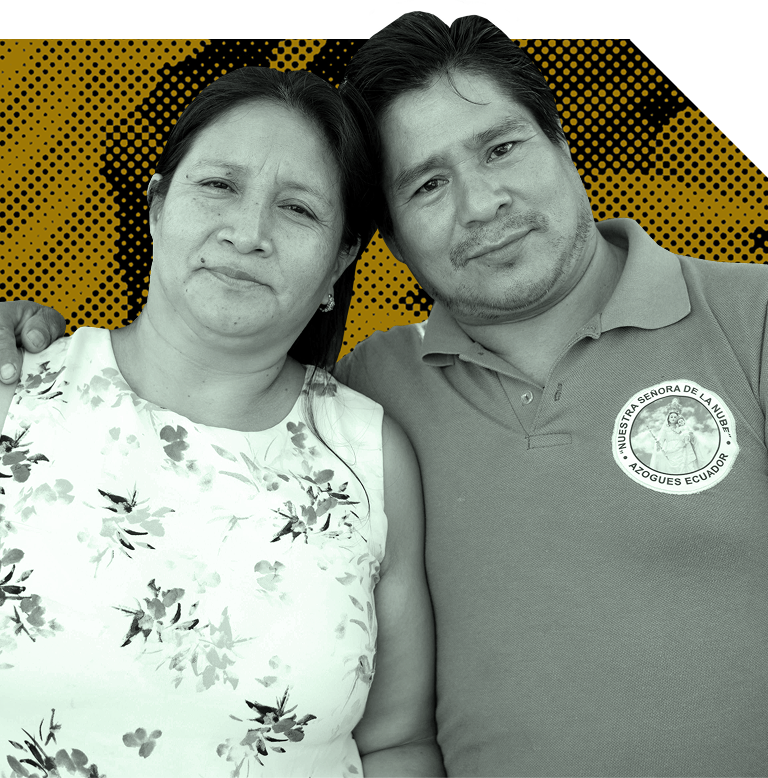
Rising rates of credit card delinquencies across the DMV between 2022 and 2024
These patterns are consistent with national data, which show a similar rise in both average household credit debt and delinquency rates on credit loans over the last 4 years.
Average credit card household debt and delinquency rates in the DMV
Despite many people’s constraints paying credit accounts off in full (or at all), purchasing essential items via credit is an increasingly common way in which individuals are floating their household budgets. This includes the utilization of both credit cards and “buy-now-pay-later” (BNPL) services, such as Klarna or Afterpay, which allow consumers to spread out payment for items purchased with a specific retailer over several installments. Utilization of BNPL has been rising in recent years, with 84% of financially fragile households using it at least twice in the last year, according to a study by the Federal Reserve Bank of New York.
My check is already stretched to the limit. So if I didn't have it this pay period, I'm not going to have it next pay period.
The study also found that the majority of BNPL users are utilizing the tool to support small purchases (under $250), indicating a difficulty affording basic needs. Use of BNPL to purchase food is up in 2025 - even higher than in 2023 - despite extremely elevated food inflation rates at that time.
Share of "buy now pay later" users buying groceries
As with increased credit card debt, increased use of BNPL poses potential financial risks for those using it, with research showing use of this form of credit associated with a higher likelihood of dipping into savings and incurring overdraft, nonsufficient funds, and other late fees. As of summer 2025, BNPL can also impact users’ credit scores.
Financial tradeoffs
Many Are Choosing Between Food and Other Critical Needs, Like Medicine or Housing
When experiencing constrained finances, many survey respondents reported modifying their spending patterns. Some of these changes include reducing spending in areas that are often considered discretionary, for instance, cutting down on dining out at restaurants (84%), canceling subscriptions to streaming television services (60%), and reducing the frequency of taking taxi or ride-hailing services (27%).
Other reductions in spending, however, have been in categories with a direct connection to health and well-being. For example, among people with worsening finances, 45% skipped or delayed health-related spending on things like medicine or doctor’s visits, and 55% purchased lower cost, less healthy food at the grocery store.
Reductions in essential expenditures, including health care, food, utilities, and housing, are disproportionately concentrated among low-income households.
Despite working full time, Angela has to make difficult tradeoffs to afford the food she needs to manage her autoimmune disease.
An assessment of these shifting financial behaviors by income level reveals that less consequential adjustments, such as reducing discretionary spending on dining out or streaming services, are distributed relatively evenly across households. In contrast, reductions in essential expenditures, including health care, food, utilities, and housing, are disproportionately concentrated among low-income households.
Shifting financial habits under financial strain, by income level
While people across the income spectrum experienced these trade-offs, people at lower income levels faced these choices at far greater rates. More than half (51%) of low-income households, for instance, reported having to choose between food and transportation; 43% had to choose between food and utilities; 42% had to make decisions on where to live; and 40% had to choose between food and medicine.
Share of DMV households experiencing forced tradeoffs between food and other necessities
When the need to prioritize other expenses precluded them from purchasing adequate food, respondents reported relying upon multiple coping strategies. As noted above, 55% of people with worsening finances purchased lower cost, less healthy food at the grocery store. Among those who reported they sometimes or often ran out of food before they had money to buy more, 57% reported skipping meals or cutting the size of them, and 61% shared that they ate less than they felt they should. Additionally, 47% said they experienced being hungry but did not eat because there was not enough money for food, and 35% lost weight for the same reason; 32% reported not eating for a whole day because there wasn’t enough money for food.

Some of these strategies also extended to how people reported feeding children in the household. Among food insecure households with children, 81% reported relying on just a few types of low-cost foods to provide to their kids, and 40% reported that they were unable to feed their children enough because there was not adequate money.
When it comes to children skipping meals, research in past hunger reports has indicated that adults will generally choose to forego eating their own meals so that children in their households have enough food. However, in some cases respondents shared that they simply could not afford groceries. Among those respondents, 34% had to cut the size of their children’s meals, 19% had to skip a meal for their kids, and 9% were not able to feed their children for a whole day.






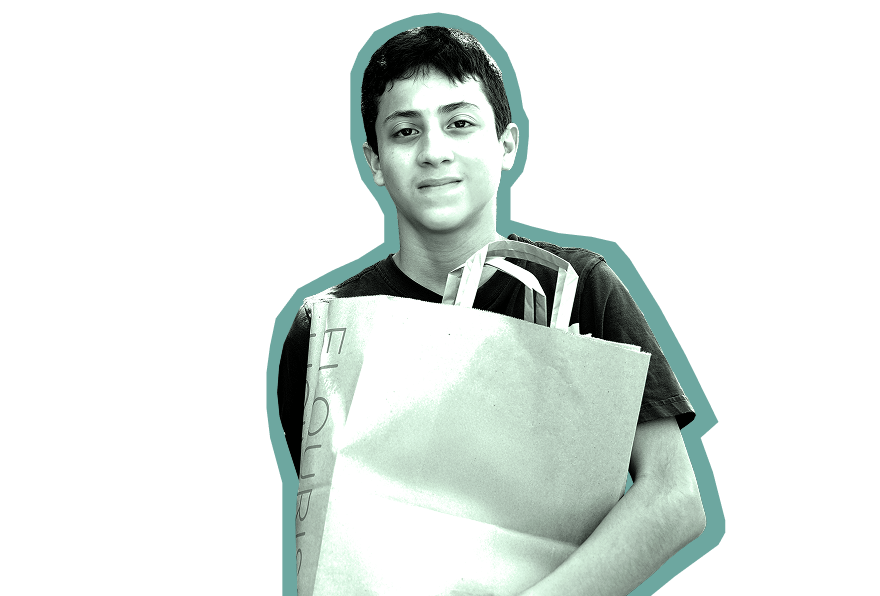

Future Implications of Current Trends
As more people face economic stress in our region over the coming 6–12 months, the potential for an array of negative impacts is high. The following section, drawing from trends and data shared earlier in the report along with a variety of external data sources, explores several of the factors influencing levels of financial instability and food insecurity in our region. Cumulatively, this information points to an elevated risk that more people in our region could experience various forms of hardship over the coming year and beyond.
Consequences of economic stressors
Today’s Financial Strains Point to Longer Term Hardship and Entrenched Economic Instability
The economic circumstances being faced by a large and growing number of people in our area are likely to have profound repercussions. This is true in both the coming year and in the longer term, as the impacts of stagnant wages, coupled with harmful financial coping behaviors, threaten to compound over time and worsen the financial stability of current and future generations. Moreover, these impacts are likely to be felt most severely by those with lower incomes, deepening existing inequities across our region.
The economic factors and behaviors impacting many families in the coming year and beyond include:
-
Wage stagnation:
As wages fail to keep up with inflation, the short-term impacts can be clearly seen as many people struggle to afford the necessities of daily life due to diminished buying power. This decline in real wages can also result in serious long-term financial consequences. A study exploring the impact of the Great Recession on retirement earnings shows that the recession was likely to reduce average annual incomes at age 70 by 4.3 percent, a drop driven almost entirely by the anemic wage growth that occurred during the recession. Even if wages begin growing at higher rates at a future time, many workers are unable to make up the ground lost during this time of slower wage growth.
-
Debt accumulation and/or delinquency:
By paying only the minimum due on a credit card balance or loan payment, individuals are accumulating debt that will in turn accrue interest and grow larger as it compounds. This can make the debt harder to pay back, increase the possibility of a default, and make it more likely that the debt holder will have a negative credit score, all of which can make future wealth accumulation more difficult. Debts that result in a default on a car or home can also result in repossession, leading to the loss of transportation to a job or a place to live.
-
Reinstitution of student loan payments:
From the early months of the pandemic in 2020 until late 2023, payments on federal student loans were paused. Following a one-year “on-ramp” that lasted until late 2024, delinquencies began rising in early 2025 and are now affecting 24% of borrowers, according to the Federal Reserve Bank of New York. Many of these borrowers have seen impacts to their credit scores ranging from 74 to 177 points, triggering similar effects on wealth accumulation to those described above.
-
Depletion of savings:
With large numbers of people currently forced to tap into savings to meet immediate basic needs like food, housing costs, and utilities, there are both short-term and longer-term risks. In the immediate term, use of these funds for basic necessities means that they are unavailable for financial emergencies such as a car repair or an unforeseen medical bill. Longer term, use of these funds today threatens future financial stability and security. Research shows that this can have impacts ranging from reductions in mental and physical well-being to increased health risks for children.
-
Rising hardship withdrawals from retirement funds:
Findings from the CAFB-NORC study regarding the withdrawal of retirement funds earlier than planned align with national trends of increasing hardship withdrawals over the past five years (now 4.8% of participants in 2024, up from 1.7% in 2020, according to a study by Vanguard). These behaviors can have immediate impacts in the form of penalties as well as long-term compounding impacts in the form of lost opportunities for employer-matched funds and earned interest over time. For example, withdrawing $10,000 at age 35 from an account earning 7% annually could mean roughly $76,000 by age 65.
Compounding effects of financial coping mechanisms
Cumulatively, all of these trends can lead to broader issues for the region as a whole in the form of:
-
Trade-offs that diminish health:
By purchasing less nutritious foods, skipping medical appointments, and/or foregoing medicines as methods for managing their expenses, people across the region are jeopardizing their health and long-term ability to remain active and productive. Data in the CAFB-NORC survey is already bearing this out. Previous CAFB-NORC studies have found that the food insecure individuals in our region are more than twice as likely to report having a chronic health condition that limits their daily activities compared to their food secure counterparts (29% vs. 13% in 2023). This year’s survey found, as in previous years, that several chronic conditions were experienced at statistically significantly higher rates by food insecure individuals relative to those who are food secure, including mental health disorder (28% of food insecure respondents vs. 19% of food secure respondents), diabetes (15% vs. 11%), and stroke (3% vs. 1%).These diseases have major negative consequences not only for individuals, but also for the region’s economy in the form of reduced productivity (discussed further below) and the economic losses caused by poor public health.
-
Reduced workforce viability:
If individuals are sidelined by illness and financial instability, the availability and productivity of the region’s potential workforce stands to be reduced. Data in this year’s survey results confirms this, showing that food insecure individuals who have been diagnosed with a diet-related disease are much more likely to report having to take time off of work, take breaks during work, or being less productive at work than their food secure counterparts.
-
Lower economic activity:
When those with already reduced purchasing power are further saddled with debt and facing uncertain financial futures, their capacity to engage in consumer activity that fuels the economy is unlikely to grow.
Impacts of food insecurity and health conditions on workforce productivity
Impacts from cuts to social safety net programs
SNAP and Medicaid Cuts Will Worsen Economic Circumstances for Over One Hundred Thousand People in the Region
For nearly eight decades, SNAP (the Supplemental Food Assistance Program formerly known as food stamps) has served as a critical support for those in need of help putting food on the table. The program provides monthly benefits that supplement the grocery budgets of those with low incomes. In the DMV region, more than 480,000 people rely on SNAP each month.
An estimated 50,000 families—over 10% of the current population receiving SNAP in the region—stand to lose an average of $187 in benefits per month.
Today, even as many residents of the region are facing economic hardship and the accumulating impacts of the often-unhealthy financial coping strategies outlined in previous sections, the program is poised to experience a major contraction.
With the help of the Supplemental Nutrition Assistance Program (SNAP), Dominique can put nutritious food on the table as she navigates life changes.
The passage of House Resolution 1 (H.R. 1) – the One Big Beautiful Bill Act in July 2025 (after this survey was fielded) will profoundly restructure SNAP and make unprecedented cuts of around $186 billion to the program over the next 10 years through a variety of measures, which include:
-
New costs for states:
Many states will now be required to pay a portion of SNAP benefit costs for the first time in the program’s history (effective October 2027 or later), and a larger share of the program’s administrative costs—moving from 50% up to 75%—will be shifted to states (effective in October 2026).
-
More people subject to work requirements:
Adults up to age 64 (formerly age 54) and parents of children ages 14+ (formerly ages 18+) will be required to document and report at least 80 hours a month of employment, volunteering, or training participation. Previous exemptions that existed for homeless individuals, veterans, and young adults aging out of foster care have been eliminated.
-
Removal of SNAP access
for refugees and asylum seekers.
-
Caps on future increases to the Thrifty Food Plan,
which is the basis for calculating SNAP benefits, between now and 2034. This limit will prevent future benefits from keeping pace with the cost of maintaining a healthy diet over time.
These and other changes to the program will significantly reduce the support that SNAP provides to people in need across the region. According to a localized analysis conducted for CAFB by the Urban Institute using estimates from the Congressional Budget Office, among other sources, approximately 50,000 families—more than 10% of the current population receiving SNAP in the region—stand to lose an average of $187 in benefits per month when the provisions are fully implemented. With the average meal in our region costing $4.27, this amounts to a loss of about 40 meals per month.

Estimated losses of SNAP benefits from the One Beautiful Bill Act
DC, Maryland, and Virginia, are expected to lose a combined $45.7 billion in funding for Medicaid over the next 10 years.
Alongside changes to SNAP, the recent legislation includes changes that will cut Medicaid funding by more than $930 billion over 10 years—the largest cut in the program’s history—resulting in the loss of health insurance for more than 8 million people by 2034. According to estimates by the Kaiser Family Foundation, the three main jurisdictions in the CAFB’s service area, DC, Maryland, and Virginia, are expected to lose a combined $45.7 billion in funding for Medicaid over the next 10 years.
Estimated losses of Medicaid funding from the One Big Beautiful Bill Act, 2025–2034
H.R. 1 also implements work requirements as a condition of eligibility for individuals ages 19–64 applying for coverage or enrolled through the Affordable Care Act Medicaid expansion group, requiring them to document and report work or qualifying activities for at least 80 hours per month. Medicaid work requirements are expected to lead to increases of at least 116,000 to the 309,000 individuals who are already uninsured across the DMV.
Estimated losses of Medicaid coverage due to work requirements in the One Big Beautiful Bill Act
This loss of insurance is likely to have significant ripple effects. These include, most directly, major impacts on the health of those who are no longer covered and cannot afford the medical care they require. They also include economic ramifications: poorer health arising from a loss of coverage could impact employment and productivity, proving harmful to the financial situations of those impacted. Thousands of area residents who must now pay for medical treatment out of pocket may also face increased medical debt. And all of these financial risks and impacts stand to be even greater for the approximately 108,000 people in the DMV region who currently participate in both Medicaid and SNAP.
Taken together, these changes are likely to contribute to greater hardship for tens of thousands of people across the area who are currently looking to these programs for assistance, as well as reduce or eliminate support for those who may need help in the future if our regional economy weakens.
Economic fallout from federal spending cuts
Federal Downsizing Could Contribute to a New Wave of Food Insecurity
In addition to the long-term effects of detrimental financial behaviors and cuts to social safety net programs, another major factor in the state of food insecurity over the coming months is the continued fallout from RIFs and spending by the federal government. At the time of the CAFB-NORC survey, approximately 29,000 people in the region had left employment with the federal government or a federal government contractor.
Estimated employment losses in the DMV due to federal government contraction
1: Local estimates of RIFs calculated based on CNN reporting of federal workers laid off across the United States as part of efforts to downsize the federal government, multiplied by the percentage of workers at each impacted agency who are posted in the Capital Area Food Bank’s service area, according to federal workforce data from the Office of Personnel Management from September 2024 and Census data from 2023 (ACS Table S2408).
2: Local estimates of private sector layoffs based on WARN notices filed in DC, Northern Virginia, and suburban Maryland by federal contractors listed in the General Services Administration’s public directory of federal contractors.
3: Local estimates of fork-in-the-road separations in the DMV calculated based on total separations reported by the Office of Personnel Management (75,000), multiplied by the percentage of all federal civilian workers who live in the Washington DC Metro Area (15%), according to the Office of Personnel Management.
Since then, with the Supreme Court’s July 2025 decision to pause a lower court order on large-scale federal layoffs, the White House has continued implementing its plan for government downsizing, including several thousand more layoffs in the Greater Washington area. These have had trickle-down effects into secondary economies that support the federal government and increased the population at risk of experiencing food insecurity.
Given the relative recency of these events, not all people who have been impacted by them have reached a critical point with their household finances yet. The impacts of these federal reductions have also not yet been fully reflected in the local economy. A wide range of scenarios have played out for impacted households based on a variety of factors related to their financial resilience, and while some were highly vulnerable to financial shocks, others had much longer runways and still may not yet be facing material hardship. The archetypal households below illustrate this range and how long—or short—of a runway different households have after experiencing an economic shock.
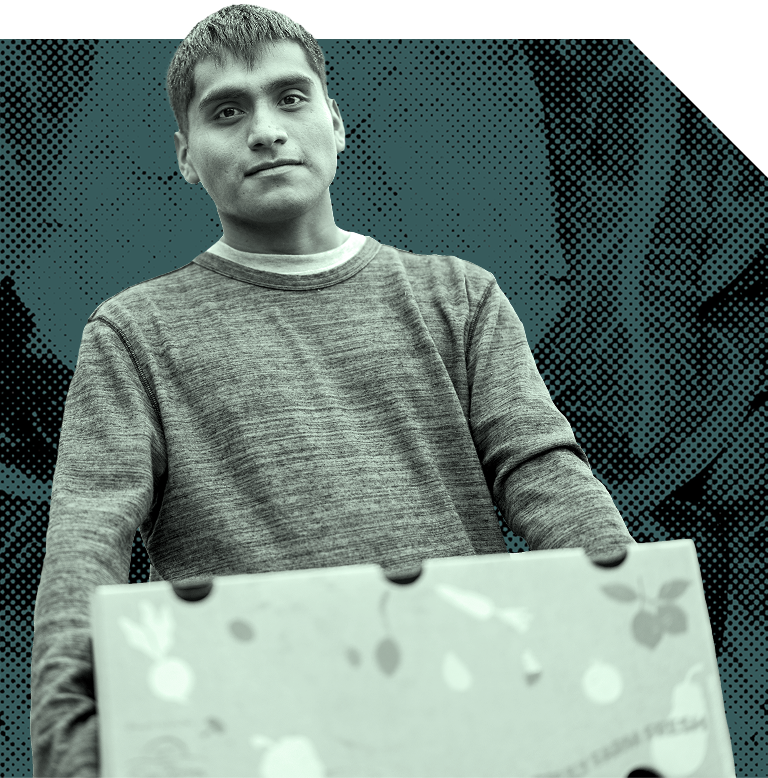
Spectrum of resiliency after a loss of employment with the federal government
At the low end of this spectrum, workers who may have been indirectly affected, such as low-wage service workers whose clients were federal workers, had very little buffer to protect them from the effects of a loss of income. These households were likely at risk of experiencing food insecurity even before 2025. Additionally, households with most or all their income coming from direct or indirect employment with the federal government—11% of all DMV households—were especially vulnerable.
At the middle and upper ends of the spectrum are households that may have been able to make ends meet for a limited time, but which, without reemployment, may eventually be added to the population facing food insecurity. For these households, a combination of savings, severance pay, and other household income may be able to stave off experiences of hardship temporarily. However, as noted earlier in the report, even high-income households have only an average of 6 months’ worth of savings, after which point they too may face difficult tradeoffs.
Looking farther ahead, approximately 11,000 people in the DMV area who took part in the Deferred Resignation Program (also known as the “fork in the road” deal) will stop receiving paychecks and benefits after September 2025, which is the same time unemployment insurance will run out for individuals who filed for the benefit at the onset of the RIFs, back in February 2025. The end of these two supports will significantly increase the risk of financial hardship for households who have not been able to find reemployment.
Experts are divided as to whether the regional economy can fully absorb all of the former federal employees now looking for jobs.
As noted earlier, many impacted workers have low levels of confidence in finding another job that pays a similar wage or uses their skills. This trend is even more accentuated among those who still work for the federal government: only a quarter of current federal employees are confident they could find a job that pays a similar wage to their current job if they were laid off, and just under half believe they could find a job that utilizes similar skills.
Low confidence in reemployment among federal workers
While significant efforts have been made to transition federal workers into the private sector—and many have successfully done so—experts and local leaders are divided as to whether the regional economy can fully absorb all the former federal employees now looking for jobs. Depending on the level and rate of that absorption over the coming months, a significant portion of this population could be at risk of becoming among the 1.5 million people in the DMV area who are already food insecure.






Recommendations
Food insecurity affects not only individuals but also the broader region, with consequences across all sectors and residents. Addressing it requires holistic, integrated strategies and collaboration among public, private, and nonprofit entities, with all institutions and organizations having a role to play in the solutions. The recommendations outlined here—some previously raised and reiterated to highlight persistent challenges—offer multi-faceted approaches with the potential to improve outcomes for our neighbors in both the near and long term.
Work to mitigate the worst impacts of SNAP cuts
With the recent passage of federal legislation that makes significant reductions to the SNAP program, detailed earlier in this report, tens of thousands of people in our region will lose access to nutritious meals. Officials at the state level are now in a more critical role than ever as they weigh how—and whether—to administer the program in the face of new cost burdens. While most states are not in a financial position to absorb the full impact of the legislation’s changes, there are specific and meaningful ways in which they can help to blunt some of its impact.
Protect school nutrition programs for children in high-need areas
School meals are a critical way that many children receive nutrition during the school year. For a large number of kids, school breakfast and lunch may be the only meals they have access to during the day.
Many schools offer these free school meals through what is known as a Community Eligibility Provision (CEP), which allows high-poverty schools to offer free meals to all students without requiring individual applications or income verification. Eligibility and federal reimbursement for CEP are based on the percentage of students who are automatically able to receive meals without an application because they are in an eligible category, such as being in foster care, or their household participates in another federal assistance program like SNAP or, in most states, Medicaid.

Any school district, group of schools in a district, or school with 25 percent or more “identified students” (children who are certified eligible for free school meals without a school meals application) can choose to participate in CEP. This provision simplifies the meal service process, reduces paperwork, and eliminates the stigma associated with free and reduced-price meals.
For a large number of kids, school breakfast and lunch may be the only meals they have access to during the day.
If large numbers of individuals are no longer able to receive SNAP (or Medicaid) due to the changes that have occurred under the new law, many kids may lose their eligibility, and schools could thus lose their ability to participate in CEP. This could force them to stop offering free school meals and would put children who may already have lost access to food at home due to changes in SNAP at an even greater risk of not getting the food they need through school.
States can mitigate these harmful impacts on kids. While many states will face difficult financial decisions due to the recent legislation, maintaining funding for school meal programs must remain a priority for states so that vulnerable children do not lose access to the food they need to thrive.
Partner with regional organizations to help more people get and stay qualified for SNAP
Many individuals who are meeting the work requirements for SNAP and other programs may still fail to qualify for these programs because the processes and paperwork to complete certification can be time intensive and administratively challenging. Others may need some support in finding work or volunteer opportunities that enable them to become qualified.
States should explore partnerships with community organizations to help more people who qualify for SNAP to get and/or stay enrolled.
In both cases, community organizations that work closely with people impacted by recent changes to federal programs are in a strong position to work with state governments to provide counsel and support that helps more people attain (or maintain) eligibility. This can take many forms, including partnerships between states and community organizations that would:
- Allow nonprofits to document and certify volunteer hours that fulfill program work requirements.
- Provide a means for community organizations (individually and/or as part of a coalition) to advise government agencies on the SNAP certification process based on the experiences of current program participants. Counsel would include recommendations on, for example, clarity of instructions and materials needed with an eye toward making the process more streamlined, intuitive, and easier to complete successfully.
- Develop or expand programs that increase training and employment opportunities for community members while also enabling certification for federal programs like SNAP.
The CAFB, for instance, is actively exploring the above possibilities with the agency officials charged with implementing changes to the SNAP program in DC, MD, and VA. We encourage all states to explore partnerships with community organizations to help more people who qualify for SNAP to get and/or stay enrolled.
Upskill and reskill food insecure individuals
As noted earlier in the report, food insecure individuals who are in the labor force are employed at equivalent rates to their food secure counterparts. They also work more jobs per person than their peers. Nonetheless, they are stretched to cover basic needs, suggesting the wages they earn in the types of jobs they hold are lower than the cost of living.
Due in large part to these low wages, many food insecure individuals are actively seeking opportunities for greater employment and are doing so at higher rates than their food secure peers. This finding from the CAFB-NORC study is consistent with those of previous years, indicating a persistent challenge with upward mobility and wage growth in the food insecure population.
Food insecure respondents expressed significant interest in several jobs that are in high demand across the DMV, suggesting there is a large, untapped talent pool.
Signs of underemployment by food security status
New in 2025, the CAFB-NORC study asked respondents about their level of interest in transitioning to a list of in-demand, living wage jobs in the region, if given the necessary training. Food insecure respondents expressed significant interest in several jobs that are in high demand across the DMV, suggesting there is a large, untapped pool of talent for these positions.
Interest in switching careers among food insecure individuals
This finding highlights a significant opportunity for employers to cultivate new talent pipelines in communities they may not traditionally engage, but which can add significant value to their organizations. Employers who are committed to growing diverse talent pipelines can partner with community-based organizations to serve as the connective tissue between the high-quality jobs they are offering and the labor force they are hoping to reach, capitalizing on the social sector’s deep relationships and reputations as trusted institutions in these communities.
While a third of food insecure people reported they are already enrolled in some kind of training program to increase their skills, two-thirds are not.
However, even with these kinds of transformative partnerships, several barriers exist to connecting food insecure individuals with the training they need to qualify for living wage jobs. While a third of food insecure people reported they are already enrolled in some kind of training program to increase their skills, two-thirds are not. These individuals cited a range of barriers in the survey, most of them relating to the difficult financial tradeoffs surrounding the choice to engage in skill development.
Barriers to engaging in skill development
For multiple years, CAFB has issued recommendations in the Hunger Report for cross-sectoral investment in upward mobility for low-wage workers. As evidenced by the findings above, these investments should span beyond increased access to training—which is not the sole barrier—to incorporate supportive wraparound services that reduce the trade-offs people face when engaging (or deciding whether to engage) in skill development. Living stipends, food access, childcare support, and transportation are all powerful levers for increasing the enrollment, retention, and completion of these training programs.
Additionally, as the impacts of artificial intelligence on the workforce become clearer, we should consider which occupations are at lowest risk for automation and guide individuals seeking upward mobility into those pathways.
Since 2022, CAFB has piloted numerous programs with local workforce development actors, providing grocery stipends to food insecure adults pursuing a range of workforce credentials and degrees. These programs target a mix of industries, with a growing emphasis on programs that are preparing students for entry-level, living wage jobs in health care, IT, and building trades.
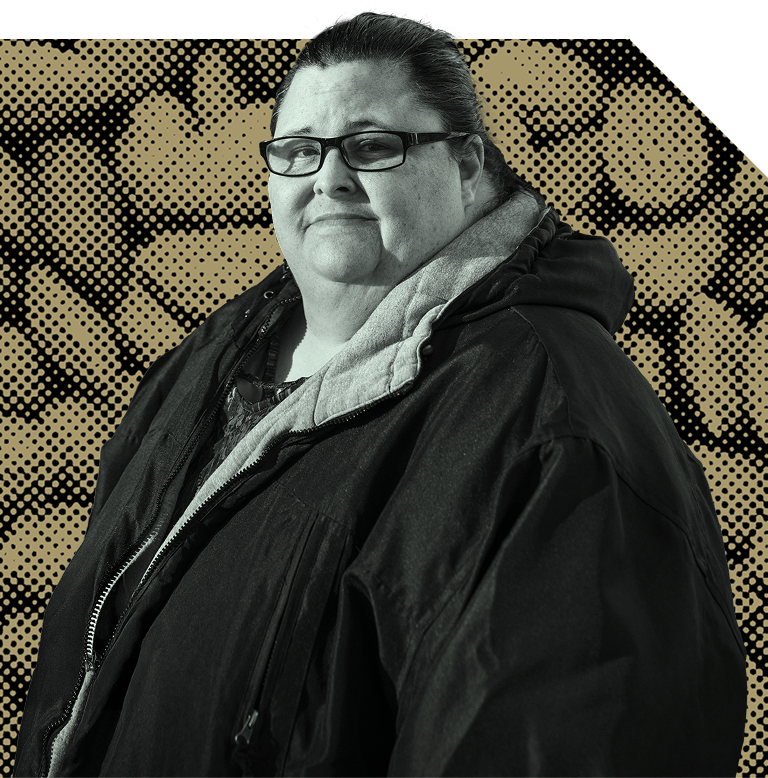
CAFB’s partners include Northern Virginia Community College, Prince George’s Community College, George Mason University, the University of the District of Columbia’s Workforce Development and Lifelong Learning Division, and Trinity Washington University. Early data from these pilot programs point to high impact on reducing food insecurity among students and improved academic performance among participating students relative to control groups.
Promote Food Is Medicine Approaches
Diet-related illnesses are both a cause and consequence of food insecurity, and they are driving poor health outcomes and reduced workforce participation across the region. Addressing hunger without addressing nutrition misses the opportunity to improve health and reduce long-term health care costs.
As noted in sections above, this year’s CAFB-NORC survey continued to find a profound link between food insecurity and health. Food insecure people reported being substantially more likely to be unable to afford to eat balanced meals, more likely to report having a diet-related condition that impacts their daily life, and more likely to suffer impacts to their ability to be productive at work due to their conditions. These findings reinforce the growing recognition of the link between diet-related conditions and food insecurity, and the critical role of nutrition in treating those conditions, which together form the foundation of the Food Is Medicine (FIM) movement. The alignment of stakeholders—including food providers, health care providers, government, health care payors, philanthropy, and employers—around this shared effort is essential to effectively address the intersection of health and nutrition.
System-level approach to Food is Medicine requires involvement from six key stakeholders
Implementers
Food providers such as food banks and health care providers including hospitals and clinics are key implementers of FIM work. Food providers partner with health care organizations to integrate food access into clinical care plans and settings, enabling patients with chronic conditions to receive medically supportive groceries. CAFB is one of many food banks around the country which has built partnerships with regional hospitals to offer on-site food pharmacies for patients who screen positive for certain diet–related conditions and food insecurity. These pilots are beginning to offer promising signs of simultaneously combatting food insecurity while improving health, with full outcomes data forthcoming from CAFB’s ongoing research studies.
Enablers
In addition to the implementers of FIM work, there is a key set of enablers who support and fund these programs. Funding for FIM is essential, because often it is those patients who are least able to pay whose health would be most improved through a FIM intervention.
Federal and state government action is vital to the success of FIM, as it can impact the Medicaid funding streams used to implement FIM for much of the low-income population. Through Medicaid section 1115 waivers (formally known as Section 1115 Demonstrations), states can apply to allow federal dollars to fund programs related to “social determinants of health,” including nutrition. So far, 16 states have been approved to use this funding mechanism for nutrition, with five more awaiting approval from the federal government, including Washington, DC.

Given the vocal support from many in the current administration for Make America Healthy Again and FIM, including Health and Human Services Secretary Robert F. Kennedy, many in the FIM movement hope that there will be federal support for new and existing funding mechanisms to use government funds to pay for nutritional supports for patients with diet-related conditions and food insecurity.
Government is not the only stakeholder with an incentive or responsibility to address diet-related illness and food insecurity through FIM solutions. One of the most significant sources of funding for FIM in the Greater Washington region has been philanthropy. Philanthropy is well-positioned to provide the seed capital to build the infrastructure required for FIM solutions, fund research studies about the efficacy of FIM on health outcomes and cost of care, and to jump start solutions that can create meaningful impacts on patients today. Much of the FIM work CAFB has done in partnership with providers in the region has been funded by donors.
Health care payors, too, have compelling reasons for investing in FIM solutions, including a strong financial incentive, as they bear the direct costs of treating diet-related chronic conditions. Given their direct access to actuarial data that can demonstrate return on investment for the health care system, payors are uniquely positioned to fund comprehensive studies on the cost-effectiveness and cost-savings of various FIM interventions across different patient populations. By investing in nutrition-based interventions, payors can reduce long-term medical costs while improving member health outcomes.
Employers also have a significant stake in addressing diet-related conditions and food insecurity among their workforce. To promote a healthier and more productive workforce, employers can implement solutions such as incorporating FIM benefits within their employee health plans or providing access to nutritious food options in the workplace. These investments in employee nutrition and health can yield returns through reduced absenteeism, improved productivity, and lower health care costs.
Food insecure people were more likely to report having a diet-related condition that impacts their daily life and were more likely to suffer impacts to their ability to be productive at work.
As the FIM ecosystem of enablers continues to mature, the blend of contributors can evolve to allow for long-term sustainability. Philanthropy has already—and can continue to—play a pivotal role in setting the foundation for FIM efforts. As these efforts grow in enrollment and impact, funding can begin to shift toward a blended model where an increasing portion is driven by governments, which can tap into larger funding streams; and private sector actors, including payors and employers, who have the ability to realize returns on investment from this type of programming. The scale enabled by this broader set of funding will allow nutritional interventions to drive better health outcomes, lower costs of care, and higher productivity for more of the people who could benefit from them.






Conclusion
While many signals have continued pointing to a rebounding post-pandemic economy, the reality for an increasing number of people in metropolitan Washington tells a different story. Economic progress is not being felt equally, and individuals and families are facing deepening financial hardship along with some of its most immediate and painful consequences, including hunger.
The toll this takes is both individual and systemic. Without consistent access to nutritious food, more people are struggling to stay healthy, focused, and productive in school and at work. This not only limits their ability to thrive in the present, but also undermines long-term opportunities for economic mobility and stability. And when individuals fall behind, entire communities—and the region’s future competitiveness—are at risk.
If current trends persist, the consequences will only grow more pronounced. The deepening food insecurity that threatens to erode the basic well-being of our neighbors has far-reaching implications, and threatens to weaken the social and economic fabric we all rely on.
Reversing course will demand coordinated action, informed policy, and meaningful investment across sectors. By working together to remove barriers, expand access to opportunity, and ensure everyone has the nourishment they need to succeed, we can build a future where progress truly includes us all.